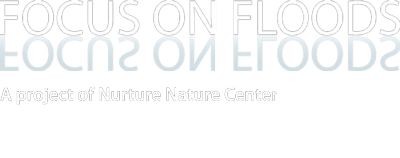Hurricane/Post-Tropical Storm Sandy, also known as Superstorm Sandy, occurred on October 22-29, 2012. It originated as a hurricane in the Caribbean and traveled north, eventually transitioning into a post-tropical storm just hours before making landfall in New Jersey on the evening of October 29th. The damages from Superstorm Sandy were extensive, including 147 direct deaths, damage to approximately 650,000 houses, approximately 8.5 billion people without power, and over $50 billion in damage costs. Although the majority of the damage was due to the severe storm surge along the Northeastern coast, blizzards, fires, and high winds were also problematic.
Superstorm Sandy was unique for several reasons, two of which were its track (it approached the US from the east, which is unusual) and its transition from tropical to post-tropical. This transition was the root of many communication and operational concerns to the NWS and local offices. Although emergency managers, the media, and others thought the event was forecasted well, the final decision to issue non-tropical watches and warnings versus hurricane watches and warnings induced confusion among many emergency managers, decision makers, and the public. This decision was made on Friday, October 26th with the aim of having a consistent message throughout Sandy’s duration. Unfortunately, not all emergency managers, decision makers, the public, and broadcast meteorologists were aware of this change of storm type, and many thought they were under a hurricane watch and warning when Sandy made landfall. For example, the results of a telephone study conducting during Sandy showed that the majority of respondents believed they were under a hurricane watch when Sandy made landfall. Other studies show similar findings.
Along with confusion in communicating the storm type and warnings, there were several other issues that accompanied Sandy. First, many NWS users found it difficult to find useful information among the suite of NWS websites. Although NOAA websites received an astonishing 1.3 billion hits during Sandy, many thought there were “too many clicks” to get the information they needed. Information sources that were found to be helpful include NWS chat and emergency management briefing packages sent by the Upton and Mt. Holly Weather Forecasting Offices. Additionally, social media was used extensively during the storm to relay information and disseminate warnings (most notably Facebook and Twitter). Another issue during Sandy was the need for better storm surge information, preferably in the form of inundation graphics. A survey conducted in early 2013 found that 79% of participants were expecting less inundation than occurred during Sandy. The NWS and associated organizations are currently working on these issues brought to the forefront by Superstorm Sandy, a storm that will be remembered for some time.
